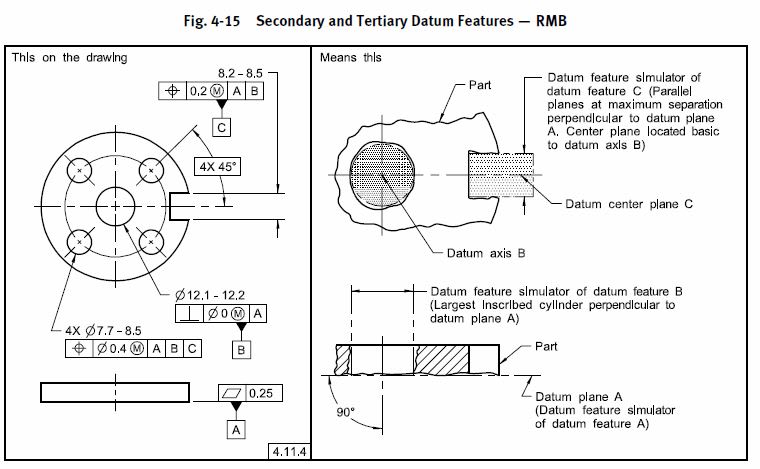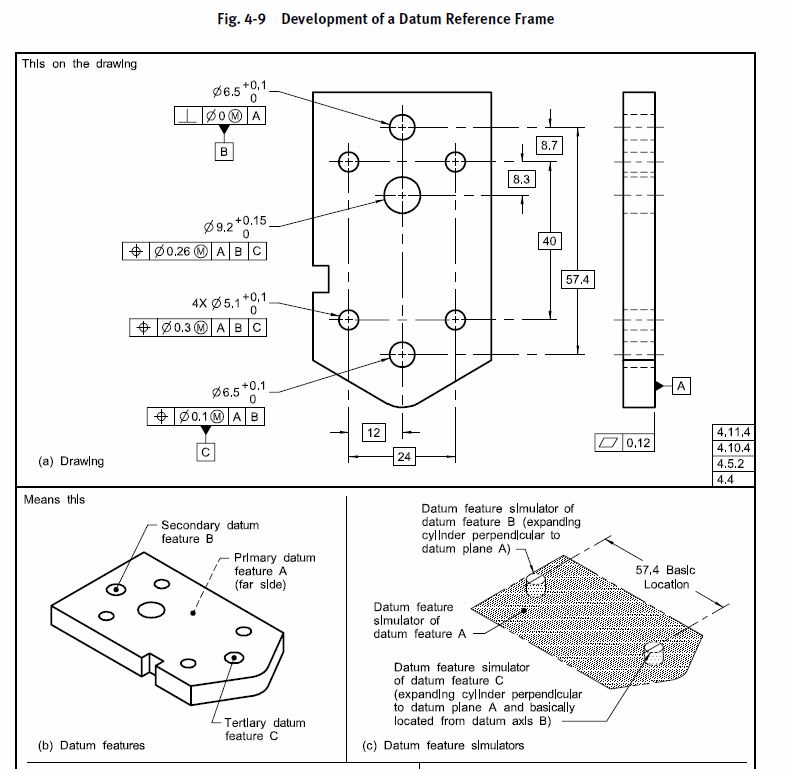kingofboars
Mechanical
- Nov 13, 2019
- 2
Hello everyone,
we had a discussion the other day that seemed simple but we didn't solve it yet.
In our company the creation of drawings is limited to the minimum regarding effort. We use minimum-dimension TPD, of which I'm not even sure if it's a standard other companies around the globe use it. At least our suppliers know what to do with it.
Result is that new engineers (myself included) are not well-taught how to create proper drawings. If I start thinking about it, I sometimes get a little lost.
Imagine a arbitrarily shaped metal part (flat back surface that is datum feature A).
The plate has a hole and a slotted hole. The hole is datum feature B, the slotted hole datum feature C.
Now there's a groove in the part in which a tube should fit. It has a control feature: Profile of a surface xx.x A|B|B-C on the cross-sectional area of that groove (since the tube must fit).
My question is: why was B-C used? Could C also suffice?
We think yes, however my colleague came up with a counter-example: the slotted hole now is a hole, so there's two holes in total. One of the holes is datum feature B, the other hole is datum feature C. He says, now you can't use Profile xx.x A|B|C since this doesn't define your profile.
How is that? For me it starts with knowing how it is measured in the first place. I really appreciate your feedback, thanks in advance.
we had a discussion the other day that seemed simple but we didn't solve it yet.
In our company the creation of drawings is limited to the minimum regarding effort. We use minimum-dimension TPD, of which I'm not even sure if it's a standard other companies around the globe use it. At least our suppliers know what to do with it.
Result is that new engineers (myself included) are not well-taught how to create proper drawings. If I start thinking about it, I sometimes get a little lost.
Imagine a arbitrarily shaped metal part (flat back surface that is datum feature A).
The plate has a hole and a slotted hole. The hole is datum feature B, the slotted hole datum feature C.
Now there's a groove in the part in which a tube should fit. It has a control feature: Profile of a surface xx.x A|B|B-C on the cross-sectional area of that groove (since the tube must fit).
My question is: why was B-C used? Could C also suffice?
We think yes, however my colleague came up with a counter-example: the slotted hole now is a hole, so there's two holes in total. One of the holes is datum feature B, the other hole is datum feature C. He says, now you can't use Profile xx.x A|B|C since this doesn't define your profile.
How is that? For me it starts with knowing how it is measured in the first place. I really appreciate your feedback, thanks in advance.


